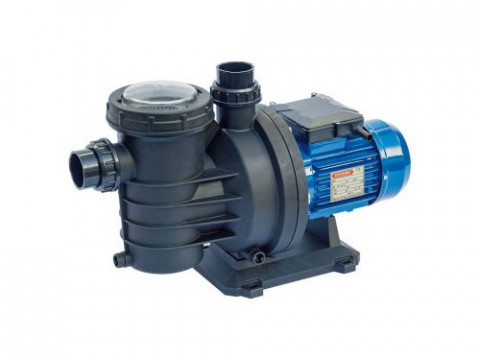With the arrival of heat, all those who have a swimming pool at home are preparing to enjoy it again. But they may encounter the unpleasant surprise that the water pump does not work properly. To avoid this, today we give you some tips for the maintenance of your pool pump.
To prolong the life of your pool’s pump engine and that it works properly, it is important to provide the proper environmental conditions around the engine. The engine itself is quite autonomous and generally needs little attention.
The correct maintenance of any type of water pump is essential for its correct operation. Take note of the following tips!
Tips for maintaining your pool pump
- Humidity: water leaks from pump seals or pipe joints must be repaired to avoid bearing and insulation failures. The pump should never get wet. Ride the engine away from low places and wet areas, and take measures to protect it from rain and wind.
- Cooling: make sure there is ample air circulation around the engine. Do not allow debris to accumulate around the engine vents. Clean the air inlets as necessary, always making sure that the power is turned off first. If an external engine cover is used, make sure it does not let moisture in and that there is enough space between the engine and the cover to allow fresh air to circulate through the engine. Clean the air inlets as necessary, making sure the power is off first.
It may be that when the engine is running it is too hot, but this does not necessarily mean that it is overloaded. Isolated Class B motors have a maximum operating temperature of 133º C. If the automatic protector does not trip and the amps do not exceed the amps, the motor does not overload.
- Seasonality: Whenever the engine shuts down for extended periods, make sure all surfaces, vents and interiors are dry to prevent oxidation. If the engine is kept outdoors, cover it to prevent debris such as leaves, dirt and snow from clogging the entrances.
When restarting the pump and motor after a prolonged idle time, check that the suction is flooded so that the pump seal is wet. Starting the engine with the dry pump seal can damage the seal. - Cleaning: In general, the interior of the engine should not need cleaning if the appropriate safety measures are met against contamination by dirt, lint or sand. If you want to clean the exterior, simply use a damp cloth. Do not spray the engine with a water hose. Flooding the engine can cause permanent damage.
- Lubrication: The bearings normally have double sealing and are permanently lubricated. If it seems that the bearings have failed, simply replace them. Noisy bearings are the first sign of bearing failure. If the bearings do not change immediately, the engine may overheat causing other parts to fail. Bearing noise is often a sign that the pump seal has been leaking. Always change the pump seal when changing bearings.
- Chemicals: Do not store or use chemicals near the engine. Its fumes will corrode the internal parts of the engine.
- Dirt: avoid sweeping or removing dust near the engine while it is running.
These are the main tips you should follow for the proper maintenance of your pool pump. If these tips come a little late and you have discovered that your pool pump does not work, stop by our pool pump section and we will help you find the one that best suits your needs.

